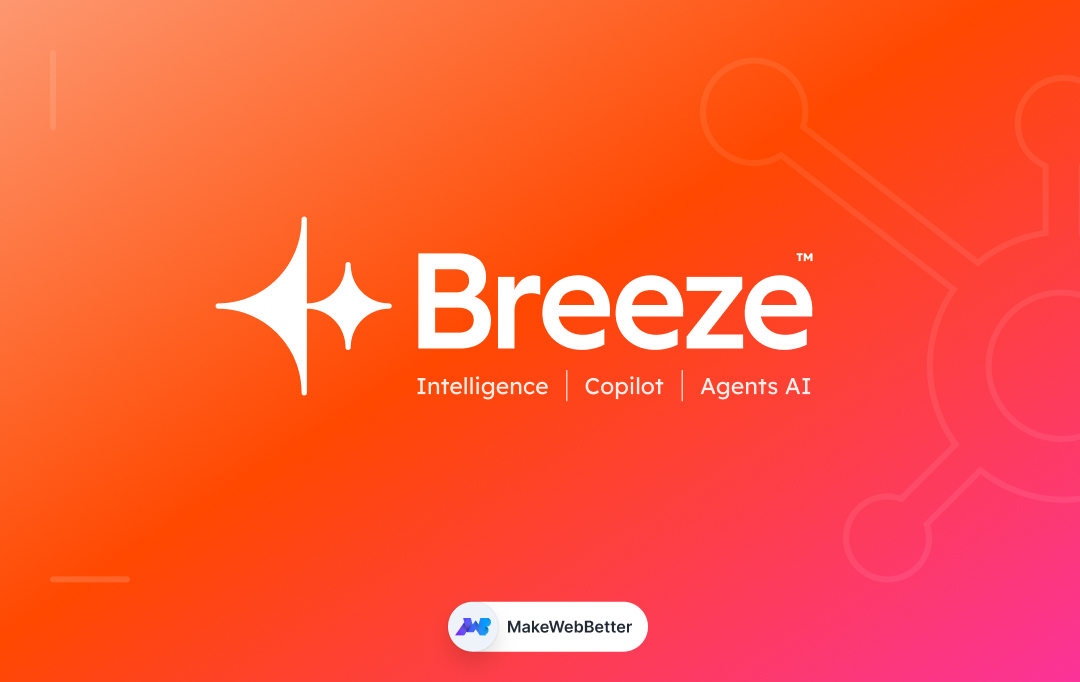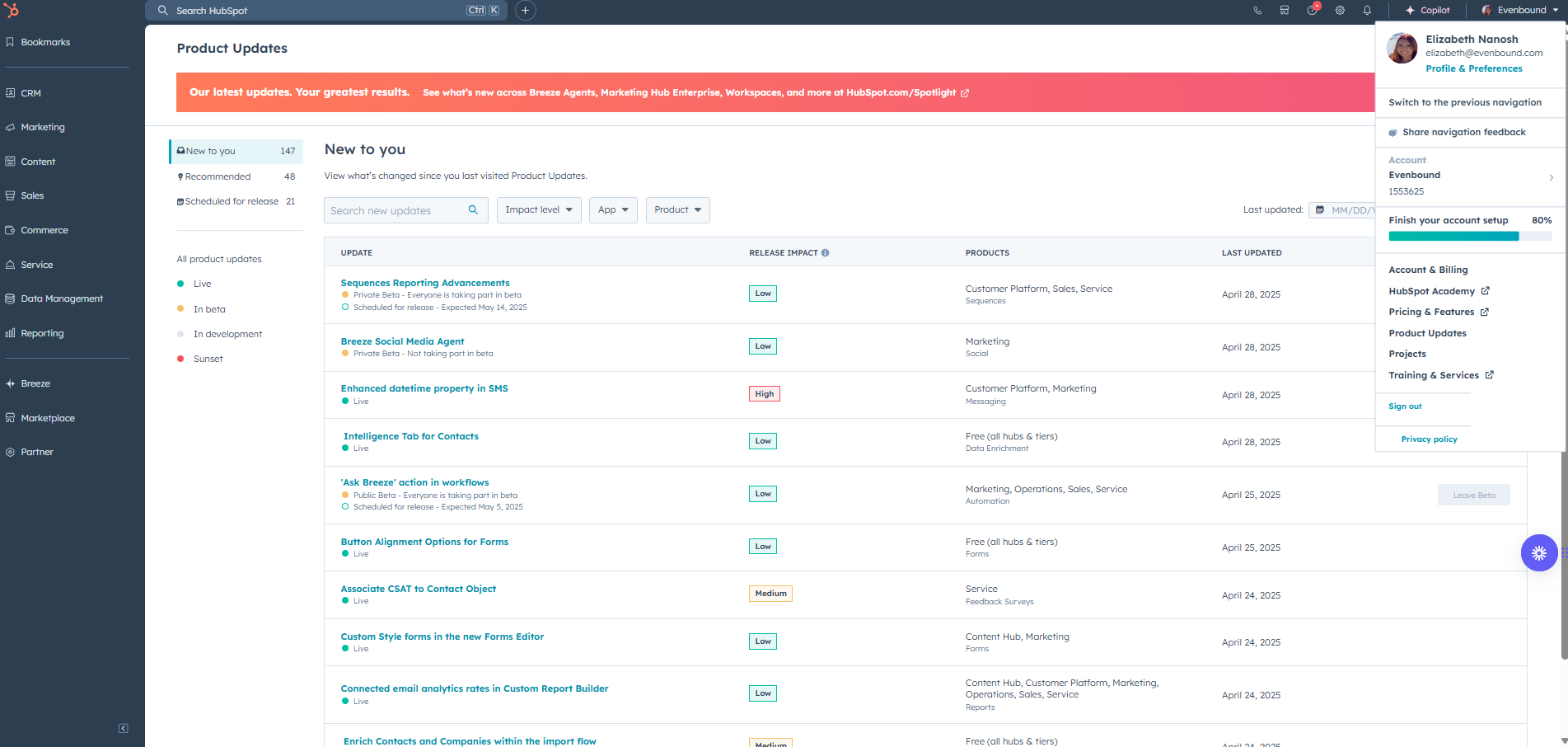
HubSpot Breeze AI: Complete Buyer's Guide
Comprehensive AI-powered lead nurturing platform
HubSpot Breeze AI represents a comprehensive AI-powered lead nurturing platform that integrates generative AI, autonomous agents, and predictive analytics directly into HubSpot's established CRM ecosystem. Launched at INBOUND 2024, this platform transforms how mid-market businesses automate lead engagement while maintaining contextual relevance and personalized interactions[41][42][43][46][56].
Market Position & Maturity
Market Standing
HubSpot maintains a strong competitive position in the mid-market CRM segment, with Breeze AI representing a strategic evolution rather than a startup venture[41][42][43].
Company Maturity
HubSpot's mature infrastructure supports over 100,000 customers globally, providing the operational scale and reliability essential for enterprise AI deployments[56].
Growth Trajectory
The company's established revenue base and profitable operations provide the financial foundation necessary for sustained AI development and customer support[56].
Industry Recognition
HubSpot's GDPR-ready data handling and compliance framework positions the platform favorably for regulated industries requiring strict data governance[56].
Strategic Partnerships
The company's established partnerships with major technology providers and extensive developer ecosystem demonstrate market validation and integration capabilities that newer AI vendors cannot match.
Longevity Assessment
HubSpot's public company status ensures transparency in financial performance and long-term viability, addressing buyer concerns about vendor stability that affect smaller AI startups[56].
Proof of Capabilities
Customer Evidence
Agicap, a logistics platform, provides comprehensive evidence of HubSpot Breeze AI's enterprise-grade capabilities[56].
Quantified Outcomes
Organizations report 80% faster lead qualification processes and 15-hour weekly workload reductions per employee through AI automation capabilities[42][48].
Case Study Analysis
A documented SaaS company implementation showcased content efficiency improvements, achieving 45% reduction in campaign turnaround time while maintaining brand consistency through AI Content Assistant capabilities[47].
Market Validation
The platform's 4-8 week implementation timeline compared to 3-6 months for enterprise alternatives provides competitive advantage in deployment speed and time-to-value realization[44].
Competitive Wins
Organizations with clean data foundations achieve 25% higher accuracy than rule-based systems through contextual AI that learns from organizational data patterns[4][17][27][32].
Reference Customers
Agicap and a B2B services provider are notable implementations demonstrating the platform's effectiveness in lead generation and response optimization[56][47].
AI Technology
HubSpot Breeze AI's technical foundation leverages generative AI, autonomous agents, and predictive analytics integrated natively within HubSpot's CRM ecosystem[41][42][46].
Architecture
The platform operates through three interconnected AI systems that share unified data access and contextual intelligence[41][42][54].
Primary Competitors
Adobe Marketo, Salesforce Einstein, Drift, ActiveCampaign, Clay[44].
Competitive Advantages
HubSpot Breeze AI's native CRM integration depth distinguishes it from standalone solutions requiring extensive third-party connections[44].
Market Positioning
HubSpot positions Breeze AI as a comprehensive mid-market solution that balances advanced AI capabilities with implementation simplicity[44].
Win/Loss Scenarios
HubSpot wins when organizations prioritize native CRM integration over specialized AI capabilities, require 4-8 week deployment timelines, and need unified workflow management across multiple functions[44].
Key Features

Pros & Cons
Use Cases
Pricing
Featured In Articles
Comprehensive analysis of AI Lead Nurturing for AI Marketing & Advertising for AI Marketing & Advertising professionals. Expert evaluation of features, pricing, and implementation.
How We Researched This Guide
About This Guide: This comprehensive analysis is based on extensive competitive intelligence and real-world implementation data from leading AI vendors. StayModern updates this guide quarterly to reflect market developments and vendor performance changes.
58+ verified sources per analysis including official documentation, customer reviews, analyst reports, and industry publications.
- • Vendor documentation & whitepapers
- • Customer testimonials & case studies
- • Third-party analyst assessments
- • Industry benchmarking reports
Standardized assessment framework across 8 key dimensions for objective comparison.
- • Technology capabilities & architecture
- • Market position & customer evidence
- • Implementation experience & support
- • Pricing value & competitive position
Research is refreshed every 90 days to capture market changes and new vendor capabilities.
- • New product releases & features
- • Market positioning changes
- • Customer feedback integration
- • Competitive landscape shifts
Every claim is source-linked with direct citations to original materials for verification.
- • Clickable citation links
- • Original source attribution
- • Date stamps for currency
- • Quality score validation
Analysis follows systematic research protocols with consistent evaluation frameworks.
- • Standardized assessment criteria
- • Multi-source verification process
- • Consistent evaluation methodology
- • Quality assurance protocols
Buyer-focused analysis with transparent methodology and factual accuracy commitment.
- • Objective comparative analysis
- • Transparent research methodology
- • Factual accuracy commitment
- • Continuous quality improvement
Quality Commitment: If you find any inaccuracies in our analysis on this page, please contact us at research@staymodern.ai. We're committed to maintaining the highest standards of research integrity and will investigate and correct any issues promptly.